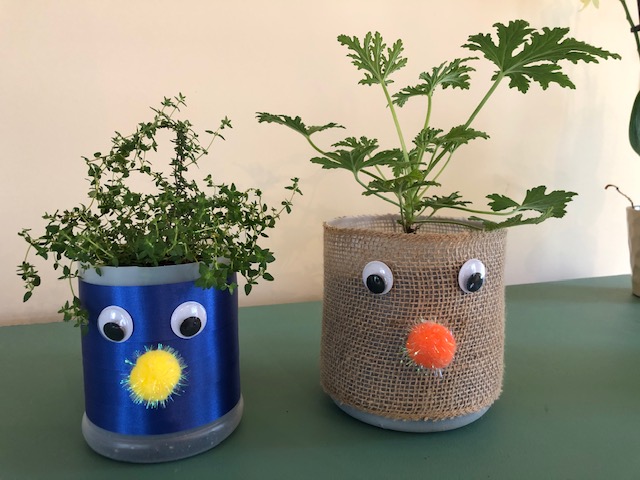
Growing Nature-Loving Children,
One Seed At A Time With This Fun Planting Project
“A child’s world is fresh and new and beautiful, full of wonder and excitement."
– Rachel Carson, Pittsburgh Conservationist (1907-1964)
by Lori Waryanka
April 21, 2021
We know what Rachel Carson was talking about. It’s that bright yellow dandelion plucked from the yard and triumphantly handed to Mom. Or, that handful of stones tucked into the tiny front pant pocket that we find when we’re washing clothes.
Children are curious. And if we create fun learning experiences about our environment, we can expect our planet to be occupied by adult versions of the nature-loving kids that we’ve helped to create.
Get A Little Dirty, A Little Crazy
So, don’t waste another minute. Tackle this whimsical “Crazy Hair Planter” project that lets us upcycle plastic bottles, get our hands a little dirty and submerse our tiny tots into the world of growing and appreciating plants. A list of supplies you will need is below. But first, let’s find out what our children can gain from this project other than having tons of fun!
Planting The Seed Of Ecology
“In my opinion, the earlier children are exposed to nature the more they’re going to care and the more they’re going to protect it,” said Allison Petris, an environmental educator. As they connect with nature, they become “better stewards of the environment.”
She knows more than a thing or two about this subject.
“We do quite a bit of early childhood programming here,” Petris said of the Winnie Palmer Nature Reserve in Latrobe where she serves as environmental education coordinator.
Petris plans and facilitates most of the programming at the 50-acre facility that’s sits adjacent to St. Vincent College. The property boasts trails, meadows, gardens, and the Educational Learning Barn open to everyone from infants to adults. And often times, she said, the pre-K programs tend to “open the eyes” of the parents to whom nature and environmental issues “might not be their thing.”
The Research
There’s been significant research and writings on the issue of “children’s development and relationship to nature,” Petris said, pointing to a resourceful publication she encourages adults to read.
“Last Child in the Woods, Saving Our Children from Nature-Deficit Disorder,” written by Richard Louv, is a book that Petris said addresses the need of “getting kids off the screen and outside.”
In the book, Louv brings together research showing that direct contact to nature is essential for healthy childhood development, and for physical and emotional health.
Bringing Nature Indoors
The temperature is still a bit too cool to have our children plant outdoors. And, there’s a chance of another frost through the end of next month, but we can bring nature into the home with this “Crazy-Hair Planter” project. It’s fairly economical and immensely creative — starting with an empty washed plastic bottle, some potting soil, seeds or small plants, and various craft supplies some of which we may have on hand.
If using seeds, there can be up to a 2-week delay in seeing some real action as there are varying germination periods. We used grass seed for one of our containers, which we recommend, because the seeds germinate in less than a week and we saw some very green “hair” about 2-inches long in about 12 days! We also used herbs — thyme and scented geranium — purchased in 4-inch pots.
We prefer to use clear plastic, one- or two-liter soda bottles because it is so very easy to see the root growth.
“With the clear plastic bottles, (children) can see the life cycle of the seeds and the plants as they grow,” Petris said while commending the project’s use of upcycled plastics. “Start them really early with the thought of re-using items to keep them from going into the landfill.”
Mini-Greenhouse/Mini-Water Cycle
This table-top greenhouse mimics the outdoors. The top bottle portion with cap attached (cut and removed for planting purposes) is placed back on for a natural growing environment.
Petris said the water added to the soil evaporates into the air and condenses in the form of water droplets on the bottle top. The droplets fall back onto the growing plant, and the cycle continues much like rain precipitation outdoors.
To create a true indoor eco-system, find a tiny creature outside such as an earthworm and place it in your homemade planter. Pertris said the worm will add nutrients to the soil even while your planter sits indoors.
Supplies
- Clean, empty plastic containers (soda or water bottles, and milk or vinegar jugs with caps)
- X-Acto knife or sharp kitchen shears
- Potting soil and water
- Plants or seeds
- Craft supplies such as wiggly eyes, fuzzy poms, ribbon, burlap wrap or twine
- Glue, tape or glue dots
Directions
- Cut the top portion from the bottle, leaving at least 6 inches to fill with potting soil. And, if you’re planting seeds you’ll want to keep the top portion with the screw cap attached to use as a greenhouse cover.
- Fill the container with potting soil that has been moistened with water.
- Add seeds to a soil depth listed on the seed packet, or place your purchased plant snugly into the soil.
- If using seeds, place the top back onto the container. It may slide over with a little bending of the plastic. If not, tape the top to the bottom. That plastic “greenhouse lid” can be removed periodically to check on germination or to add water if soil is dry, and then removed permanently once the foliage has grown.
Giving the Planter Personality
- Wrap the plastic container with ribbon, twine or burlap and secure with glue or tape
- Glue on wiggly eyes and a pom for a nose
- Sit back and watch the crazy hair grow
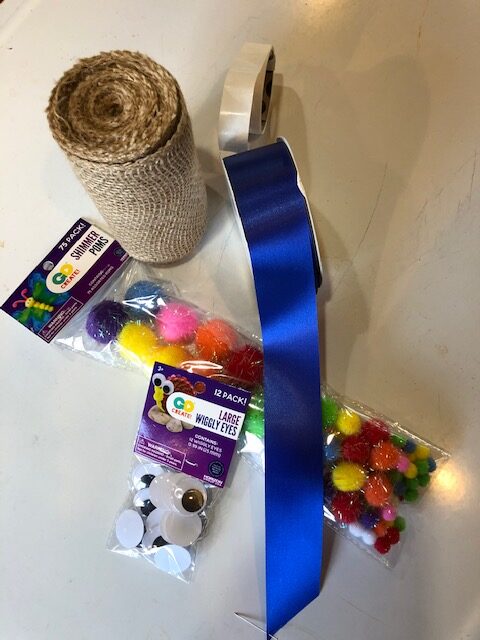
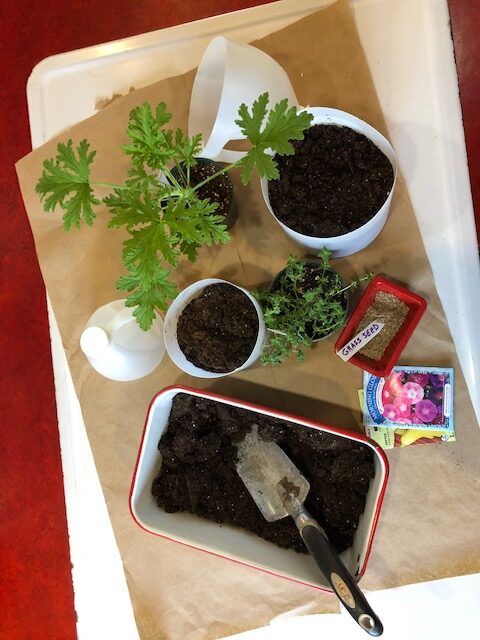
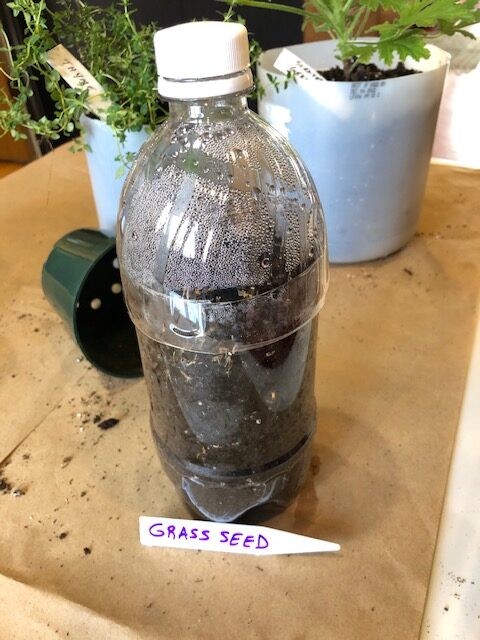
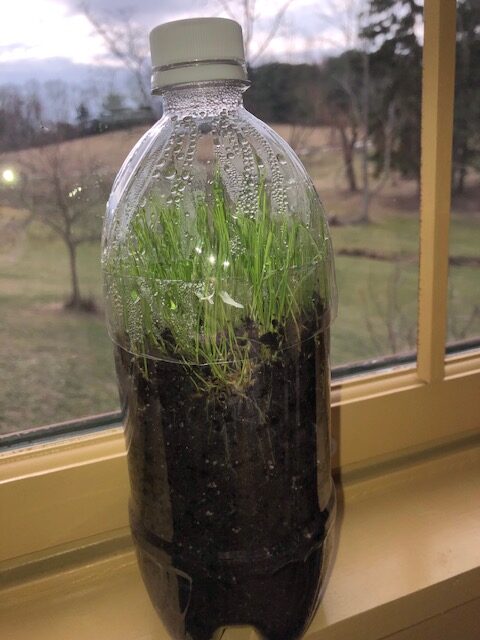
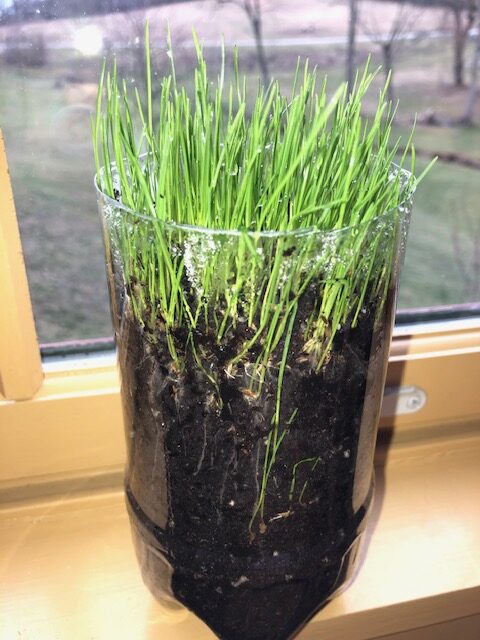
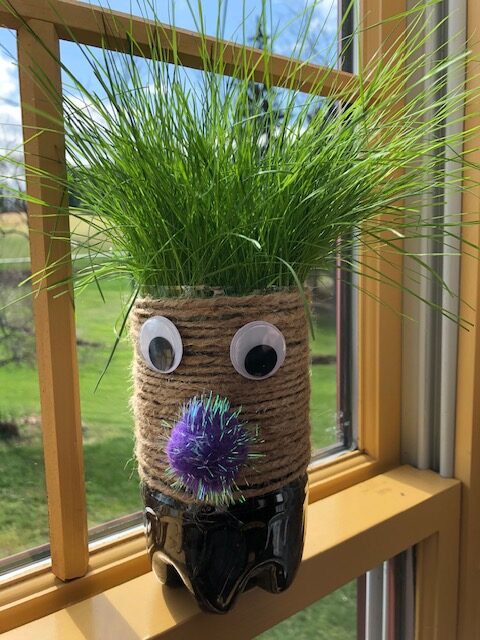

Leave A Comment